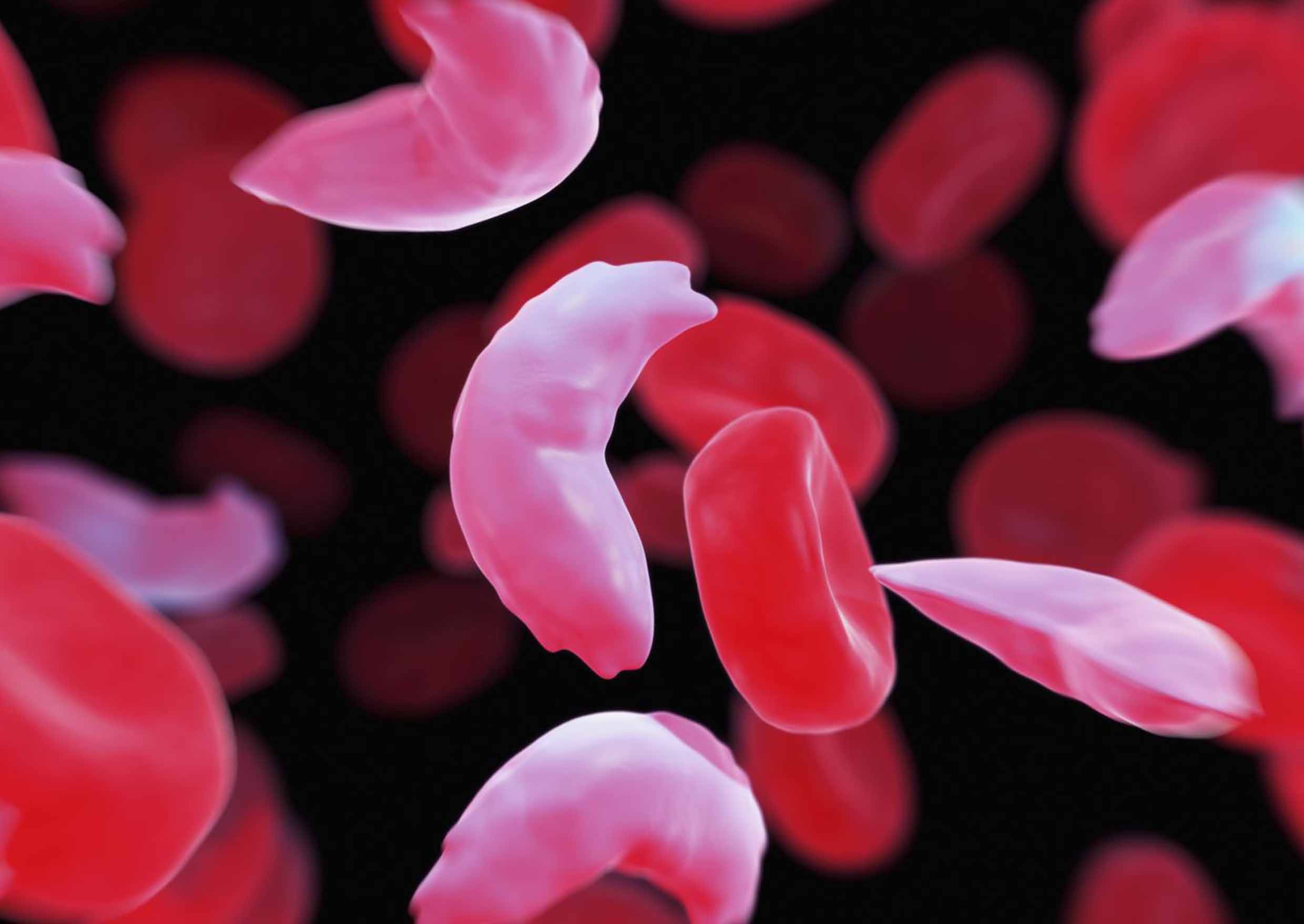What Is Sickle Cell Disease?
Sickle cell disease (SCD) is a group of inherited red blood cell disorders.
- Healthy red blood cells are round and they move through small blood vessels carrying oxygen to all parts of the body.
- In SCD, the red blood cells become hard and sticky and look like a C-shaped farm tool called a “sickle”.
- Sickle cells die early, which causes a constant shortage of red blood cells.
- Sickle cells can get stuck in small blood vessels and block the flow of blood and oxygen to organs in the body. These blockages cause repeated episodes of severe pain, organ damage, serious infections, or even stroke.
What Causes Sickle Cell Disease?
SCD is inherited in the same way that people get the color of their eyes, skin, and hair.
- A person with SCD is born with it.
- People cannot catch SCD from being around a person who has it.
Who Is Affected By Sickle Cell Disease?
- It is estimated that SCD affects 90,000 to 100,000 people in the United States, mainly Blacks or African Americans.
- The disease occurs among about 1 of every 500 Black or African-American births and among about 1 out of every 36,000 Hispanic-American births.
- SCD affects millions of people throughout the world and is particularly common among those whose ancestors come from sub-Saharan Africa; regions in the Western Hemisphere (South America, the Caribbean, and Central America); Saudi Arabia; India; and Mediterranean countries such as Turkey, Greece, and Italy.
What Health Problems Does Sickle Cell Disease Cause?
Following are some of the most common complications of SCD:
“Pain Episode” or “Crisis”: Sickle cells don’t move easily through small blood vessels and can get stuck and clog blood flow. This causes pain that can start suddenly, be mild to severe, and last for any length of time.
Infection: People with SCD, especially infants and children, are more likely to experience harmful infections such as flu, meningitis, and hepatitis.
Hand-Foot Syndrome: Swelling in the hands and feet, often along with a fever, is caused by the sickle cells getting stuck in the blood vessels and blocking the blood from flowing freely through the hands and feet.
Eye Disease: SCD can affect the blood vessels in the eye and lead to long term damage.
Acute Chest Syndrome (ACS): Blockage of the flow of blood to the lungs can cause acute chest syndrome. ACS is similar to pneumonia; symptoms include chest pain, coughing, difficulty breathing, and fever. It can be life threatening and should be treated in a hospital.
Stroke: Sickle cells can clog blood flow to the brain and cause a stroke. A stroke can result in lifelong disabilities and learning problems.
How Is Sickle Cell Disease Treated?
The goals of treating SCD are to relieve pain and to prevent infections, eye damage, and strokes.
- There is no single best treatment for all people with SCD. Treatment options are different for each person depending on the symptoms. Treatments can include receiving blood transfusions, maintaining a high fluid intake (drinking 8 to 10 glasses of water each day), receiving IV (intravenous) therapy (fluids given into a vein) and medications to help with pain.
- For severe SCD, a medicine call hydroxyurea might be recommended. Research suggests that hydroxyurea can reduce the number of painful episodes and the recurrence of ACS. It also can reduce hospital stays and the need for blood transfusions among adults who have SCD.
Is There A Cure For Sickle Cell Disease?
To date, the only cure for SCD is a bone marrow or stem cell transplant.
- A bone marrow or stem cell transplant is a procedure that takes healthy stem cells from a donor and puts them into someone whose bone marrow is not working properly. These healthy stem cells cause the bone marrow to make new healthy cells.
- Bone marrow or stem cell transplants are very risky, and can have serious side effects, including death. For the transplant to work, the bone marrow must be a close match.
For more information visit: www.cdc.gov/sicklecell



